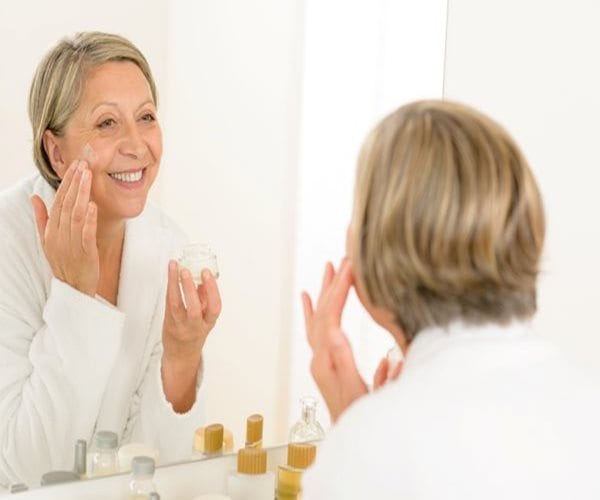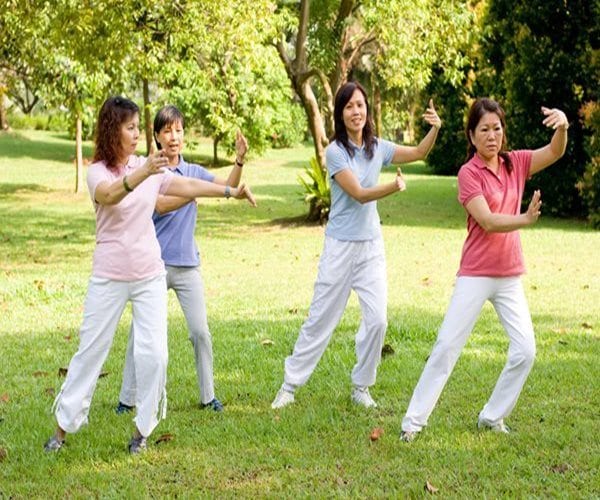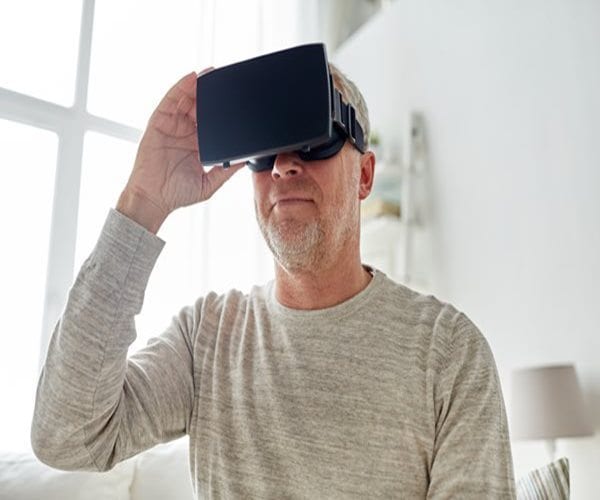Anti Aging
Back Clinic Anti Aging Chiropractic and Functional Medicine Team. Our body is in a constant and never-ending battle for survival. Cells are birthed, cells are destroyed. Scientists estimate that each cell must withstand over 10,000 individual assaults from reactive oxygen species (ROS) or free radicals. Without Fail, the body has an incredible system of self-healing that withstands the attack and rebuilds what has been damaged or destroyed. This is the beauty of our design.
To understand the biology of aging and translate scientific insight into interventions that improve late-life health through treatments. It is useful to have a clear, consensus view on what exactly constitutes anti-aging treatment.
Since before the days of Ponce de Leon’s search for longevity, man has always been enticed by the chance of eternal youth. Chiropractic care with its health movement is a powerful method of stabilizing and enhancing this self-healing ability. Dr. Alex Jimenez discusses concepts surrounding the anti-aging pandora.
.

by Dr Alex Jimenez DC, APRN, FNP-BC, CFMP, IFMCP | Anti Aging
Seniors who have a good relationship with their adult children also have a reduced risk of developing dementia, according to a new UK research published Tuesday in the Journal of Alzheimer’s Disease.
Carried out by a team of researchers from the University of East Anglia (UEA), University College London (UCL), London Metropolitan University and the University of Nottingham, the study looked at the effect of positive social support on dementia risk.
The team analyzed data that followed 10,055 participants over a 10-year period, who were all dementia-free at the start of the study.
Participants were interviewed every two years and incidence of dementia was identified from self-reports by participants or information given by nominated friends and family.
The results showed that positive support — characterized by having a reliable, approachable and understanding relationship with partners, children, and family — reduced the risk of developing dementia.
However, negative social support — characterized by critical, unreliable and annoying behaviors — had a stronger but negative effect on health, and was linked with an increased risk in developing dementia.
Commenting on the findings Dr Mizanur Khondoker, one of the study’s authors, said, “It is well known that having a rich network of close relationships, including being married and having adult children, is related to a reduced risk of cognitive decline and developing dementia.”
“However, a relationship or social connection that does not work well can be a source of intense interpersonal stress, which may have a negative impact on both physical and mental health of older adults. It is not only the quantity of social connections, but the quality of those connections may be an important factor affecting older people’s cognitive health.”
UCL Prof Andrew Steptoe also added that, “Our results will add to the impetus underlying local and national efforts to help strengthen the social relationships of older people, many of whom are isolated and lonely.”

by Dr Alex Jimenez DC, APRN, FNP-BC, CFMP, IFMCP | Anti Aging, Seniors, Skin Health
Prices for generic topical steroids to treat skin conditions like eczema and psoriasis are on the rise, and many seniors may pay more for generic medications than the brand-name versions, a U.S. study finds.
Researchers compared average out-of-pocket patient costs as well as spending by Medicare, the U.S. health insurance program for people 65 and older, for several commonly prescribed topical corticosteroids that have been used for decades to treat a wide variety of inflammatory skin conditions.
Medicare Part D, the drug benefit program, spent $2.3 billion on topical steroids between 2011 and 2015, the study found. During that period, spending surged 227 percent while the number of prescriptions increased just 37 percent.
If doctors had prescribed the cheapest version when a variety of similarly effective options were available, Medicare could have saved $944.8 million, the researchers calculate.
Patients could have saved a lot too; seniors’ annual out-of-pocket spending for topical steroids grew from $41.4 million to $101.8 million, 146 percent, during the study period.
“Patients often have difficulty paying for their medications and many patients on Medicare are retired and on fixed incomes,” said senior study author Dr. Arash Mostaghimi, a dermatology researcher at Harvard Medical School and Brigham and Women’s Hospital in Boston.
“Paying extra for their medications may mean going without other medications or sometimes food,” Mostaghimi said by email.
Generics accounted for almost 98 percent of total spending on topical steroids during the study period, the researchers report in JAMA Dermatology.
In theory, generic drugs are supposed to come on the market after brand-name versions lose U.S. patent protection and help lower prices by increasing competition. The study of topical steroid costs, however, offers one look at a much more complex and confusing reality.
For the study, researchers examined costs for drugs grouped based on potency, or how much medication is blended into the ointments and creams. They sorted drugs into five classes, with one being the most potent and five being the weakest potency.
Costs grew at the slowest rate, 23 percent, for the weakest steroids, the study found. By contrast, costs rose the most, 604 percent overall, for the most potent group of steroids.
Within that group of most potent steroids, the steepest increase in average user costs was for clobetasol propionate (Temovate), which is used to treat itching and inflammation from skin issues caused by allergic reactions, eczema and psoriasis. During the study, user costs for this drug climbed by more than 605 percent.
Limitations of the study include the lack of data on certain drug manufacturer rebates that might help lower costs, the authors note. Researchers also didn’t know if doctors had certain clinical reasons for choosing specific versions of similar medicines.
Still, the study illustrates something doctors already see all the time: that these costs often take a toll on patients, said Dr. Joslyn Kirby, author of an accompanying editorial and a dermatology researcher at Penn State Hershey Medical Center.
One challenge for doctors is that they can’t always see what different steroids of similar potency cost when they prescribe the drugs, because that’s not in electronic medical records, Kirby said by email.
“I ask my patients to contact me and let me know if the medication I prescribed during the appointment is too expensive when they go to the pharmacy,” Kirby added. “I need my patients to know that it’s ok to tell me that something is too expensive, because I can work with our staff to find an alternative or a solution.”
7.

by Dr Alex Jimenez DC, APRN, FNP-BC, CFMP, IFMCP | Anti Aging
Older adults who want to get moving to help boost their brain function have a wide variety of workouts to choose from, a research review suggests.
Among the many options for working out over 50, tai chi may have the biggest effect on cognitive function, but aerobic and resistance exercises may also have some benefit, the review found.
“Age is a risk factor no one can avoid when it comes to cognitive decline and other neurological disorders such as dementia or Alzheimer’s disease,” said lead study author Joe Northey of the University of Canberra Research Institute for Sport and Exercise in Australia.
“As our study shows, undertaking just a few days of moderate intensity aerobic and resistance training during the week is a simple and effective way to improve the way your brain functions while also reducing the impact of other risk factors for cognitive decline such as obesity and diabetes,” Northey said by email.
Some previous research suggests that heart-healthy lifestyle choices like avoiding cigarettes, eating a balanced diet and getting plenty of exercise may help stall the cognitive decline that happens with age, but these studies offer a mixed picture of what type of activity is best.
For the current review, Northey and colleagues analyzed data from 36 previously published studies looking at how much the intensity and frequency of different types of exercise was associated with improvements in cognitive function in people 50 and older.
Studies in the analysis were controlled experiments that randomly assigned some participants to specific exercise interventions to assess how activity influenced cognition.
While researchers included people with varying levels of cognitive ability, they excluded patients with a history of stroke, depression or other mental illnesses.
Across all the studies, they compared the average amount of improvement for different types of exercises and found the largest gains associated with tai chi, a Chinese meditation practice that combines deep breathing and slow, fluid movements.
Aerobic exercise, resistance training and workouts that blended different types of physical activity were also associated with gains in cognitive function, but didn’t have as much of an effect as tai chi, researchers report in the British Journal of Sports Medicine.
In particular, working memory improved with tai chi and resistance training, which was also associated with gains in executive function.
Yoga had a slight impact on brain function, but it was too small to rule out the possibility that it was due to chance.
Workouts of 45 to 60 minutes were associated with significant improvements in cognitive function, which weren’t seen with shorter or longer exercise sessions.
As for the intensity of workouts, light exercise didn’t have an effect on cognitive function but both moderate and vigorous exercise was associated with similar and meaningful gains, the study found.
Exercising more often was associated with bigger gains in cognitive ability, but there was still an improvement with no more than two workouts a week, the study found.
One limitation of the study is that the analysis focused on supervised exercise interventions, which might not reflect what people would do in the real world, the authors note.
Still, the study offers fresh evidence that the biggest benefits of exercise on brain health are expected with higher amounts, like 45 minutes or more multiple times a week, said Dr. Jeffrey Burns, co-director of the University of Kansas Alzheimer’s Disease Center in Kansas City.
“More exercise is likely better for driving brain benefits than modest amounts but we also know that some is better than none, especially for other physical benefits,” Burns, who wasn’t involved in the study, said by email. “So the key message from this study is don’t just exercise for heart health, exercise also to promote your brain health.”

by Dr Alex Jimenez DC, APRN, FNP-BC, CFMP, IFMCP | Anti Aging
Researchers in the USA have developed an ingenious system that uses virtual reality to help prevent falls by detecting and reversing balance impairments in elderly people.
The sense of balance declines in elderly people, as well as in those with neurodegenerative diseases such as multiple sclerosis. This leads to greater reliance on visual cues to maintain balance and prevent falls.
Researchers from the University of North Carolina at Chapel Hill (UNC) and North Carolina State University (NC State) developed a system to recreate the visual illusion of losing balance, tested on volunteers walking on a treadmill. The participants walked on machines set up in front of a large screen depicting a moving hallway.
“As each person walked, we added lateral oscillations to the video imagery, so that the visual environment made them feel as if they were swaying back and forth, or falling,” explains study co-author Jason R. Franz.
The researchers used 14 cameras to record the positions of 30 reflective markers on each volunteer’s legs, back and pelvis.
In response to visual disruptions and perceived loss of balance, the volunteers took longer or shorter steps, as the scientists expected. Their head and trunk swayed further sideways with each step. The variability of these measures — their tendency to change from one step to the next — increased much more significantly.
During the experiment, the researchers analyzed muscles’ ability to respond to perceived loss of balance and identified which muscle groups worked to correct it. The researchers found that individual muscles were highly coordinated in preserving walking balance.
The scientists’ data provide important reference measurements that could be used in future clinical procedures to detect balance impairments before they start to cause individuals to fall.
This kind of system could be used as a therapeutic tool to help teach balance-impaired individuals how to improve their balance and avoid falls.
According to the study, falls lead to the hospitalization or death of hundreds of thousands of elderly Americans every year.
The study is published in the journal Nature Scientific Reports.

by Dr Alex Jimenez DC, APRN, FNP-BC, CFMP, IFMCP | Anti Aging
More bad news for plus-sized Americans: Obesity is the leading cause of preventable life-years lost in the nation, a new study finds.
Obesity steals more years than diabetes, tobacco, high blood pressure and high cholesterol — the other top preventable health problems that cut Americans’ lives short, according to researchers who analyzed 2014 data.
“Modifiable behavioral risk factors pose a substantial mortality burden in the U.S.,” said study lead author Glen Taksler, an internal medicine researcher at the Cleveland Clinic.
“These preliminary results continue to highlight the importance of weight loss, diabetes management and healthy eating in the U.S. population,” Taksler said in a clinic news release.
Obesity was linked with as much as 47 percent more life-years lost than tobacco, his team said.
Tobacco, meanwhile, had the same effect on life span as high blood pressure, the researchers found.
The researchers noted that three of the top five causes of life-years lost — diabetes, high blood pressure and high cholesterol — can be treated. And helping patients understand treatment methods, options and approaches can have a significant effect, the study authors said.
The findings also emphasize the importance of preventive care, and why it should be a priority for physicians, Taksler’s team said.
However, the researchers acknowledged that some people’s situations may be different than those of the general population. For example, for someone with obesity and alcoholism, drinking may be a more important risk factor than obesity, even though obesity is more significant in the general population.
“The reality is, while we may know the proximate cause of a patient’s death — for example, breast cancer or heart attack — we don’t always know the contributing factor(s), such as tobacco use, obesity, alcohol and family history,” Taksler said. “For each major cause of death, we identified a root cause to understand whether there was a way a person could have lived longer.”
The findings were scheduled for presentation Saturday at the annual meeting of the Society of General Internal Medicine, in Washington, D.C. Research presented at meetings should be considered preliminary until published in a peer-reviewed medical journal.

by Dr Alex Jimenez DC, APRN, FNP-BC, CFMP, IFMCP | Anti Aging
One in five Americans has hearing loss so severe that it interferes with communication, said a 2011 study published in Archives of Internal Medicine. But there may be many more people who have “hidden hearing loss,” but remain undiagnosed because the damage wasn’t detected by commonly used hearing tests, according to a new study published in the journal Frontiers in Neuroscience.
People who have hidden hearing loss appear to have normal hearing when their hearing is tested using audiograms — the gold standard for measuring hearing — where hearing is typically tested in a quiet room.
The reason some forms of hearing loss may go unrecognized in the clinic is that hearing involves a complex partnership between the ear and the brain. Researchers found that the central auditory system can compensate for significant damage to the inner ear by turning up its volume control, partially overcoming the deficiency, says study lead author Richard Salvi.
“You can have tremendous damage to inner hair cells in the ear that transmit information to the brain and still have a normal audiogram,” says Salvi. “But people with this type of damage have difficulty hearing in certain situations, like hearing speech in a noisy room. Their thresholds appear normal. So they’re sent home.”
The reason hearing loss isn’t detected lies in the way hearing signals travel to the brain: About 95 percent of sound input to the brain comes from the ear’s inner hair cells.
“These inner hair cells are like spark plugs in an 8-cylinder engine,” says Salvi. “A car won’t run well if you remove half of those spark plugs, but people can still present with normal hearing thresholds if they’ve lost half or even three-quarters of their inner hair cells.”
Ear damage reduces the signal that goes the brain. That results in problems hearing, but that’s not what’s happening here, because the brain “has a central gain control, like a radio, the listener can turn up the volume control to better hear a distant station,” Salvi says.
Sound is converted to neural activity by the inner hair cells in the auditory part of the ear, called the cochlea.
The neural signals then travel from the cochlea to the auditory nerve and into the central auditory pathway of the brain. Halfway up the auditory pathway the information is relayed into a structure known as the inferior colliculus, before finally arriving at the auditory cortex in the brain, where interpretation of things like speech take place.
For people with inner hair cell loss, sound is less accurately converted to neural activity in the cochlea, but it is amplified as it travels. Once the signal gets high enough to stimulate neurons in the brain, “It’s like your brain has a hearing aid that turns up the volume,” Salvi said.
Salvi says it’s unknown how many people might have this type of hearing loss, but many older people have difficulty hearing in a noisy environment.
Spotting hidden hearing loss could be as simple as adding background noise to hearing tests.
An experimental drug called LY411575 may offer hope to people with hearing loss caused by a loss of sensory hair cells in the inner ear. The tiny hairs are vital to hearing, since sound vibrations agitate them, causing them to send signals to the brain. When the hairs are destroyed, the brain no longer receives signals that result in hearing.
The new drug works by inhibiting a protein called Notch, which keeps stem cells in the inner ear — or cochlea — from developing into new sensory hair cells. In a study of sound-deafened mice, hearing was improved in the areas where the hair cells were replaced.

by Dr Alex Jimenez DC, APRN, FNP-BC, CFMP, IFMCP | Anti Aging, Children, Wellness
El Paso, TX. Chiropractor Dr. Alex Jimenez takes a look at parenthood and longer life.
Parents, take courage. If you survive the sleep deprivation, toddler tantrums and teenage angst, you may be rewarded with a longer life than your childless peers, researchers said Tuesday.
Fathers gained more in life expectancy than mothers, a team wrote in the Journal of Epidemiology & Community Health — and particularly in older age.
“By the age of 60, the difference in life expectancy… may be as much as two years” between people with, and those without, children, they concluded.
Researchers tracked the lifespan of men and women born between 1911 and 1925 and living in Sweden — more than 1.4 million people in total.
Data Was Gathered On Whether The Participants Were Married & Had Children

Men and women with at least one child had “lower death risks” than childless ones, the team concluded.
“At 60 years of age, the difference in life expectancy was two years for men and 1.5 years for women” compared to peers with no kids, the researchers wrote.
By age 80, men who fathered children had a remaining life expectancy of seven years and eight months, compared to seven years for childless men, said the team.
For mothers, life expectancy at 80 was nine years and six months, while for childless women it was eight years and 11 months.
The study merely pointed out a correlation, and cannot conclude that having children is the cause of the life expectancy gains, the researchers admitted.
But they theorised that parents may benefit from social and financial support from their children in older age, which childless people lose out on.
It Could Be That Childless People Live Unhealthier Lifestyles Than Parents Do

The association between having children and longer life was found in married and unmarried people, but appeared to be strongest in single, older men, said the study.
This could be because unmarried men relied more heavily on their offspring in the absence of a partner.
The study did not echo previous research which found that having daughters is more beneficial for longevity than sons.
Fewer and fewer people are having children in Sweden at the same time as older people are spurning old age institutions to receive care at home — often by their children.
“Therefore, to further investigate health and survival consequences for childless older individuals is of importance,” wrote the team.

Call Today!











